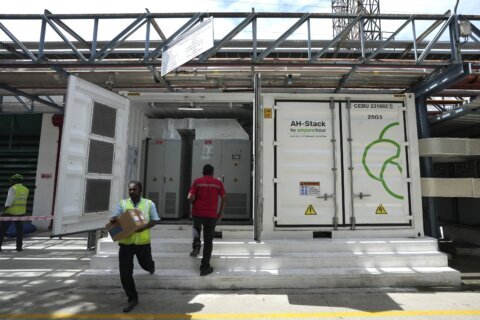On Friday, March 10, Silicon Valley Bank, a subsidiary of SVB Financial Group (ticker: SIVB), failed.
It marked the end of a rapid descent for the tech-focused commercial lender, which in 48 hours had gone from the nation’s 16th-largest bank to the second-largest bank failure in American history, behind only the 2008 implosion of Washington Mutual in the depths of the financial crisis.
[Sign up for stock news with our Invested newsletter.]
Here’s a brief look at the crisis, what’s on the line, how things spiraled and potential implications moving forward:
— What’s at stake with SVB’s failure.
— How SVB failed.
— Implications and questions.
— Bottom line for investors.
What’s at Stake With SVB’s Failure
Investors in SIVB stock will suffer a catastrophic and total loss. But beyond individual shareholders, the fear going into the weekend was around depositors’ capital and the potential for cascading economic effects. Would companies banking with Silicon Valley Bank, which included about 50% of all venture capital-backed U.S. startups, be able to make payroll? Would confidence in regional banks at large erode entirely?
The first of those questions was answered Sunday evening, as federal regulators announced a plan allowing all SVB customers — even those with more than $250,000 in FDIC-insured deposits — to have access to their capital beginning Monday.
The Treasury Department labeled SVB as well as Signature Bank (SBNY) systemic risks, giving the government broad authority to take creative measures to wind down both banks in the least disruptive way.
Importantly, these measures are not bailouts, and taxpayers are not expected to incur losses: Banks taking advantage of the program will pledge Treasurys and other high-quality collateral in exchange for short-term liquidity in the form of federal loans.
Signature Bank was overtaken by the FDIC on Sunday, two days after SVB, quickly becoming the third-largest bank failure in U.S. history. Signature Bank had heavy exposure to the cryptocurrency sector, which has been in turmoil for more than a year following a series of aggressive Federal Reserve interest rate hikes.
Signature’s collapse follows the announcement last week from crypto-focused lender Silvergate Capital Corp. (SI) that it would be voluntarily liquidating its operations. It expects all depositors to be made whole.
The common thread connecting all three bank failures was an aggressive overexposure to parts of the economy that were highly vulnerable to the historically rapid rise in interest rates: the tech sector and cryptocurrency industry.
As of Monday afternoon, it looks like San Francisco-based regional bank First Republic Bank (FRC) could be the next victim of the crisis, with shares plunging nearly 80% in morning trading despite several announcements from the bank the day before emphasizing the “safety and stability” of the bank. The company announced that it had secured access to additional liquidity from both the Federal Reserve and JPMorgan Chase & Co. (JPM).
How SVB Failed
Several factors contributed to SVB’s sudden collapse:
— Overconcentration. It’s in the name — Silicon Valley Bank was a go-to lender for the tech sector, especially venture capital-backed tech startups. The tech sector has been hammered as rates surged from zero to 4.5% in just a year’s time, causing tech layoffs, plunging valuations and private funding to shrivel up.
— Unwise exposure to bonds. Last week, SVB was faced with a potential credit downgrade from Moody’s, as the bank had racked up severe unrealized losses on long-term Treasury bonds. While it intended to hold them to maturity to recoup its full investment plus interest, the bank’s liquidity situation was ultimately too tenuous to wait that long. Despite a decision last Wednesday to raise $2.25 billion in equity, Moody’s downgraded SVB’s credit rating just hours later.
— A bank run. News of the planned capital raise and the downgrade sparked an old-fashioned bank run on Thursday, and SIVB stock plunged more than 60% as depositors rushed to withdraw funds. Those Treasury bonds and mortgage-backed securities that were deemed a safe bet were sold at severe losses, as they’d been purchased during a period of rock-bottom rates and sold after a series of historic interest rate hikes. Bonds fall as interest rates rise.
Implications and Questions
Despite the government’s move to shore up confidence and guarantee depositors’ capital over the weekend, this remains a fast-moving and volatile situation, and there’s a lot of uncertainty about how things develop from here.
Here are some of the implications from the crisis as it stands now:
— Regional bank risk. First Republic Bank’s precipitous 70%-plus drop in morning trading Monday shows the market is far from confident in the closest perceived peers to SVB. Trading in a number of regional bank stocks was halted Monday morning due to dramatic sell-offs in the stock price.
— USDC peg broken. The stablecoin USDC, which is meant to trade 1-to-1 with the U.S. dollar, broke its peg over the weekend, trading as low as 86 cents following news that Circle, the company behind USDC, had $3.3 billion with SVB. The price has almost fully normalized following the federal guarantee of depositors’ money, and USDC is trading around 99.8 cents as of Monday afternoon.
— Emerging concentration risk. This crisis is bad not only for overly concentrated regional banks, but for regional banks more broadly, as both venture-backed businesses and small- and medium-sized businesses of all ilks may be incentivized to move funds to the better-collateralized, more diversified big banks. The country’s largest banks may also opportunistically step in with usurious financing deals or acquisitions of smaller players, obtaining the accounts and relationships that smaller banks took decades to build up.
— Big banks largely insulated. Due to stringent capital requirements and regular stress tests instituted in the wake of the 2008 financial crisis, the country’s largest banks don’t ultimately appear vulnerable here, and in fact may ultimately benefit as sources of capital and steady hands during the current volatility.
With the unfolding crisis still less than a week old, a number of questions remain:
Was the SVB run intentional? Part of what made SVB so vulnerable to a run was the fact that venture capital outfits had dozens of portfolio companies under their umbrella all doing business with SVB. In the wake of SVB’s planned capital raise and credit downgrade, a number of VC firms called the companies they were funding and ordered them to withdraw their funds from SVB at once, sparking the Thursday bank run.
While some VC firms adopted the opposite strategy, standing firm with SVB, some of the largest players in the VC world, including a16z, Founders Fund, Y Combinator and Sequoia Capital, didn’t sign on to a statement of support for the bank last Friday. This has sparked some speculation that the run could have been engineered by certain VCs in order to disrupt competitors, although there has been no firm evidence supplied to support that theory.
Will buyers snap up struggling regionals? It’s not just the largest and best-capitalized banks that could emerge as buyers of the remnants of SVB and its peers. Last Friday, Tesla Inc. (TSLA) and Twitter CEO Elon Musk tweeted “I’m open to the idea” in response to a Twitter user saying the social media platform should buy SVB to become a digital bank.
Was there nefarious insider trading at SVB? On Feb. 27, less than two weeks before the FDIC overtook SVB, CEO Gregory Becker sold more than $3.5 million worth of stock. The same day, chief financial officer Daniel Beck sold $575,000 worth of shares. There’s nothing illegal about management selling shares, but the timing of these sales may raise questions over what these executives knew at the time of the trades. If the dispositions were made as a result of material nonpublic information, the executives could potentially face civil and criminal penalties.
Bottom Line for Investors
The biggest question, however, is to what extent these failures in the last week will continue to impact the banking industry, whether other companies will fall as a result and what this means for confidence in regional banks going forward.
The banking system at large is healthy and flush with cash. The diversified business lines of a Bank of America Corp. (BAC) or JPMorgan Chase aren’t comparable to the poorly run and overconcentrated nature of Silicon Valley Bank, Silvergate Capital and Signature Bank.
While it’s likely that many midsize banks are being unfairly sold off in the wake of these highly visible failures, bottom-fishing in regional bank stocks should only be entertained by the most stalwart and well-researched investors. The repercussions of the last week are only beginning to be felt, and investors should stay on the sidelines until the still-unfolding crisis in confidence surrounding regional banks subsides.
More from U.S. News
10 of the Best Stocks to Buy for 2023
9 Highest Dividend-Paying Stocks in the S&P 500
Artificial Intelligence Stocks: The 10 Best AI Companies
What Investors Should Know About Silicon Valley Bank’s Failure originally appeared on usnews.com







